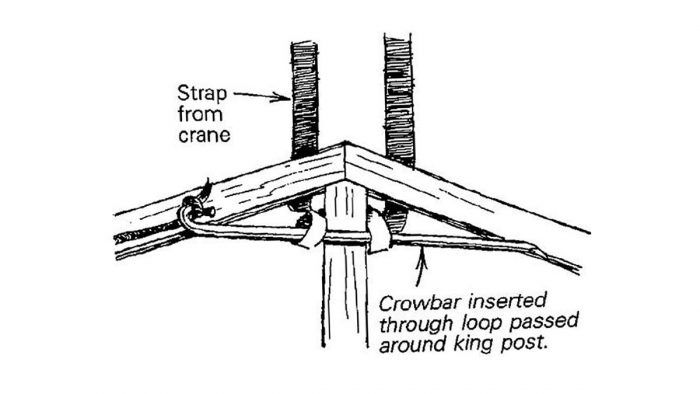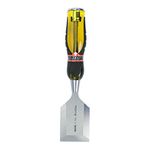
The house that we worked on this spring has a roof built with scissor trusses. We set them with a crane, but instead of using a chain to hoist them and a system of scaffold planks to gain access to the chain to release it, we devised the nylon-strap and crowbar-pin setup shown in the drawing. Looped in this fashion, the nylon strap holds the crowbar in place by tension. After a truss is positioned, nailed off, and braced, the crane operator loosens the strap and an assistant on the deck yanks a rope tied to the crowbar, releasing the strap from the truss. Yes, the crowbar does fall with some force, and anybody in the vicinity should be wearing a hardhat.
—Mike Nathan, Stella, NC
Edited and illustrated by Charles Miller
From Fine Homebuilding #68
Fine Homebuilding Recommended Products
Fine Homebuilding receives a commission for items purchased through links on this site, including Amazon Associates and other affiliate advertising programs.

Portable Wall Jack

Protective Eyewear

Short Blade Chisel





























View Comments
You could add a 2nd rope to the crowbar that is attached to the truss at the next upper chord panel point to keep the crowbar from falling as far. Even with the added rope, I would not use this method, it is still not safe!
OSHA would have a field day with this method.
The truss will not hang plumb - depending on its length and the truss spacing, this could prove problematic.
Will the truss manufacturer guarantee this as an acceptable lift point? During the lift it will put the top chord in tension when it is designed to resist compression.